"In the Traffic of Cairo's DIY Highway Exit, an Urbanist Movement Grows," Joseph Dana, Next American City

Virtual, visual, verbal flânerie through scenic, human, and cultural byways ~ small town space, open space, wild space, cityspace, cyberspace, unspace. Baudelaire's Paris it's not, 'la chambre à deux" perhaps - but still its own kind of microcosm.

We have been modern for several centuries now. We are modern, and we want to be modern; it is a desire that guides the entire life of Western societies. That the will to be modern has been in force for centuries, though, suggests that we have not succeeded in being truly modern—that the end of the process that we thought we saw coming at various moments has always proved illusory, and that 1789, 1917, 1968, and 1989 were only disappointing steps along a road leading who knows where....
Modernity is characterized by movement, a movement that never reaches its end or comes to rest....The movement of the West began with the movement of the Greek city....To be more precise, Western movement began with internal and external movements of the Greek city—that is, with class struggle and foreign war. Cities were the ordering of human life that brought to light the domain of the common, the government of what was common, and the implementation of the common. The Greek city was the first complete implementation of human action, the ordering of the human world that made action possible and meaningful, the place where men for the first time deliberated and formulated projects of action. It was there that men discovered that they could govern themselves and that they learned to do it. The Greek city was the first form of human life to produce political energy—a deployment of human energy of a new intensity and quality. It was finally consumed by its own energy in the catastrophe of the Peloponnesian War.
Subsequent Western history was, on the whole, an ever-renewed search for a political form that would recover the energies of the city while escaping the fate of the city—the city that is free but destined to internal and external enmity.So what would the Greek peripatetic be the original flâneur? Read the rest at City, Empire, Church, Nation by Pierre Manent, City Journal Summer 2012
 Over the weekend, a stoop sale in Park Slope that was composed of some clothes, dishes, a bike, and a floor lamp was shut down by the police. The seller, a commenter on the message board Brooklynian, said that two police officers parked their car and plainly said, "You can't do this here." They then proceeded to ask whether or not he or she had a license.
Over the weekend, a stoop sale in Park Slope that was composed of some clothes, dishes, a bike, and a floor lamp was shut down by the police. The seller, a commenter on the message board Brooklynian, said that two police officers parked their car and plainly said, "You can't do this here." They then proceeded to ask whether or not he or she had a license.The license, in that case, most likely meant a Secondhand Dealer General License, ... needed by "a person or business that buys or sells secondhand articles in New York City." Exempt from that, however, are garage sales, used boat dealers, not-for-profits, and curiously, used clothing stores.
Here are a few points to consider, if we're going to have this debate: Most New Yorkers don't have a front lawn to host a garage sale, if we're going to have this debate: Most New Yorkers don't have a front lawn to host a garage sale, but that doesn't automatically mean the word "stoop" is a legitimate substitute.
A rent-paying resident doesn't own his stoop... but even though they're occasionally kind of annoying to the rest of a building's tenants, stoop sales (much like sample sales are naturally occurring phenomena that most city dwellers—particularly Brooklyn residents—have come to accept and enjoy.Read the rest at The NYPD Shut Down a Park Slope Stoop Sale - Controversies - Racked NY
 "Approximately 4,000 years ago, a set of spiritual principles was communicated to humanity in a moment of divine revelation. These ancient revelations unlock all the mysteries of humanity; the secret code that governs the universe. It's the grand unified theory pursued by Einstein. It's an incredible system of logic and a phenomenal technology that can alter the way you view your life. It is the oldest sacred document in existence, filled with wisdom. This extraordinary, powerful set of tools is known as Kabbalah—the original instruction manual for life."
"Approximately 4,000 years ago, a set of spiritual principles was communicated to humanity in a moment of divine revelation. These ancient revelations unlock all the mysteries of humanity; the secret code that governs the universe. It's the grand unified theory pursued by Einstein. It's an incredible system of logic and a phenomenal technology that can alter the way you view your life. It is the oldest sacred document in existence, filled with wisdom. This extraordinary, powerful set of tools is known as Kabbalah—the original instruction manual for life." Kabbalah - Tree of Life - Image Credit: Alan James Garner/wikimedia commons
Kabbalah - Tree of Life - Image Credit: Alan James Garner/wikimedia commons
|
When the philosopher Baruch de Spinoza received word of a successful transmutation of lead into gold in December of 1666, he quickly sought to quell his skepticism by personally visiting the adept, and the visit left him fully convinced of the veracity of the adept’s account.
 Cultures that endure carve out a protected space for those who question and challenge national myths. Artists, writers, poets, activists, journalists, philosophers, dancers, musicians, actors, directors and renegades must be tolerated if a culture is to be pulled back from disaster
Cultures that endure carve out a protected space for those who question and challenge national myths. Artists, writers, poets, activists, journalists, philosophers, dancers, musicians, actors, directors and renegades must be tolerated if a culture is to be pulled back from disaster It would be impossible to cover here the range of ideas in Harvey’s recent book, Rebel Cities, but it is worth considering one of its key themes: how might the city, rather than the workplace, be the key site of anti-capitalist struggle?
It would be impossible to cover here the range of ideas in Harvey’s recent book, Rebel Cities, but it is worth considering one of its key themes: how might the city, rather than the workplace, be the key site of anti-capitalist struggle? . See also, David Harvey essay, "The Right to the City" in New Left Review.
. See also, David Harvey essay, "The Right to the City" in New Left Review.
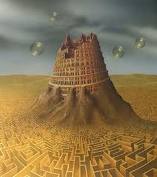 The increasing development of transnational ties and coalitions among social movement activists and organizations through the decades reveals how multilingualism can act as a vital and empowering resource for promoting sociopolitical change. Yet, the global hegemony of English also reveals how underlying power dynamics present dilemmas for progressive movements founded upon inclusive principles of multiculturalism and participatory democracy. Social movement scholarship also reflects this linguistic power dynamic and scholars should take heed. By providing more opportunities and venues for non-English speakers to participate in shaping academic debates and discussions new insights and theoretical perspectives are more likely to develop.
The increasing development of transnational ties and coalitions among social movement activists and organizations through the decades reveals how multilingualism can act as a vital and empowering resource for promoting sociopolitical change. Yet, the global hegemony of English also reveals how underlying power dynamics present dilemmas for progressive movements founded upon inclusive principles of multiculturalism and participatory democracy. Social movement scholarship also reflects this linguistic power dynamic and scholars should take heed. By providing more opportunities and venues for non-English speakers to participate in shaping academic debates and discussions new insights and theoretical perspectives are more likely to develop. The same thing is true of Muppet Theory, a little-known, poorly understood philosophy that holds that every living human can be classified according to one simple metric:
The same thing is true of Muppet Theory, a little-known, poorly understood philosophy that holds that every living human can be classified according to one simple metric: Museum buildings have long been a redoubt of architectural innovation and a dependable method for institutions to refresh their images and programming — just look at the Guggenheim Bilbao, whose name has become synonymous with museum-led urban renewal. Given that new buildings and renovations are a rare occasion, what’s another way for 21st-century museums to get a brand boost? They might choose to redesign that other gallery space — their Web site.
Museum buildings have long been a redoubt of architectural innovation and a dependable method for institutions to refresh their images and programming — just look at the Guggenheim Bilbao, whose name has become synonymous with museum-led urban renewal. Given that new buildings and renovations are a rare occasion, what’s another way for 21st-century museums to get a brand boost? They might choose to redesign that other gallery space — their Web site. In Walking in Roman Culture, Timothy M. O’Sullivan eloquently explains that how and why a person walked were crucial cultural indicators in ancient Rome: ways of walking divided barbarians from Romans, and good Romans from bad. If this aspect of Roman culture has not often bulked large in modern studies of the ancient world, that is partly because – as O’Sullivan notes – we have chosen not to recognize it, or have even actively “translated it away”.
In Walking in Roman Culture, Timothy M. O’Sullivan eloquently explains that how and why a person walked were crucial cultural indicators in ancient Rome: ways of walking divided barbarians from Romans, and good Romans from bad. If this aspect of Roman culture has not often bulked large in modern studies of the ancient world, that is partly because – as O’Sullivan notes – we have chosen not to recognize it, or have even actively “translated it away”. Streets aren't just for jaded flâneurs. Sarah Goodyear writes in Atlantic Cities about not being a soccer mom anymore and how her son discovered the joy of spontaneity and kept his love of playing just about anything involving a ball.
Streets aren't just for jaded flâneurs. Sarah Goodyear writes in Atlantic Cities about not being a soccer mom anymore and how her son discovered the joy of spontaneity and kept his love of playing just about anything involving a ball. 

“Keeping the cost of borrowed money a bit lower for one more year won’t cure the rising cost of higher education. It’s not even a bandage. It’s more like giving some comforting words to a critically injured patient. It might make a few people feel better, or win some votes, but it won’t do much to help our problems."
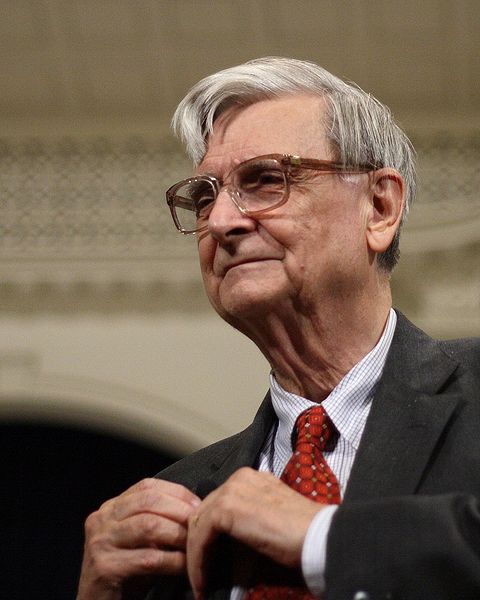 This month, legendary Harvard sociobiologist E. O. Wilson — who once famously said that “the elegance, we can fairly say the beauty, of any particular scientific generalization is measured by its simplicity relative to the number of phenomena it can explain” — penned a terrific Harvard Magazine piece on the origin of the arts. One of Wilson’s most urgent points is something we’ve already seen articulated by C. P. Snow, who in 1959 lamented a dangerous cultural dichotomy, and Johan Lehrer, who spoke of a “fourth culture of knowledge” — the need for bridging the sciences and the humanities. Wilson writes:
This month, legendary Harvard sociobiologist E. O. Wilson — who once famously said that “the elegance, we can fairly say the beauty, of any particular scientific generalization is measured by its simplicity relative to the number of phenomena it can explain” — penned a terrific Harvard Magazine piece on the origin of the arts. One of Wilson’s most urgent points is something we’ve already seen articulated by C. P. Snow, who in 1959 lamented a dangerous cultural dichotomy, and Johan Lehrer, who spoke of a “fourth culture of knowledge” — the need for bridging the sciences and the humanities. Wilson writes:Since the fading of the original Enlightenment during the late eighteenth and early nineteenth centuries, stubborn impasse has existed in the consilience of the humanities and natural sciences. One way to break it is to collate the creative process and writing styles of literature and scientific research. This might not prove so difficult as it first seems. Innovators in both of two domains are basically dreamers and storytellers. In the early stages of creation of both art and science, everything in the mind is a story.Wilson’s great talent is perhaps the gift of bridging the poetic with the scientific:
If ever there was a reason for bringing the humanities and science closer together, it is the need to understand the true nature of the human sensory world, as contrasted with that seen by the rest of life. But there is another, even more important reason to move toward consilience among the great branches of learning. Substantial evidence now exists that human social behavior arose genetically by multilevel evolution. If this interpretation is correct, and a growing number of evolutionary biologists and anthropologists believe it is, we can expect a continuing conflict between components of behavior favored by individual selection and those favored by group selection. Selection at the individual level tends to create competitiveness and selfish behavior among group members—in status, mating, and the securing of resources. In opposition, selection between groups tends to create selfless behavior, expressed in greater generosity and altruism, which in turn promote stronger cohesion and strength of the group as a whole.But the most expansive beauty of Wilson’s essay lies in his articulation of art, at the heart of which is a sentiment common to the greatest definitions of science and of philosophy:
A quality of great art is its ability to guide attention from one of its parts to another in a manner that pleases, informs, and provokes.Image by Desert Stars
 Brain Pickings has a free weekly newsletter and people say it’s cool. It comes out on Sundays and offers the week’s best articles. Here’s what to expect. Like? Sign up.
Brain Pickings has a free weekly newsletter and people say it’s cool. It comes out on Sundays and offers the week’s best articles. Here’s what to expect. Like? Sign up.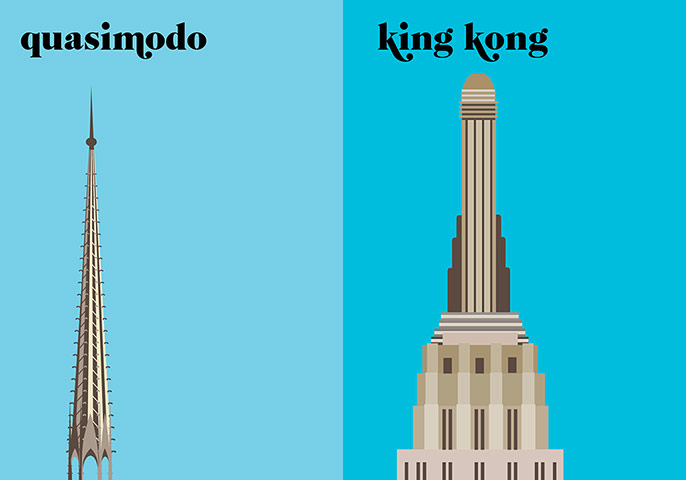
"It all started when I wondered, if I was stranded on a desert island, what aspects of Paris and New York would I keep? What would be the perfect collection of things? They could be habits, or landmarks or food, anything that would bring the two cultures together in one image."Paris versus New York: A Tally of Two Cities, Penguin, £11.99
 A couple weeks back TJ published an article called Are You Controlled by Your Inner Pigdog? - the Neurobiology of Choice. I was one of the editors of that piece, and I sent some resources TJ's way that ended up on the cutting room floor of the final article (you can't get it all in), so I'm going to pop them into a Bricolage here as a sort of extended footnote to that piece.
A couple weeks back TJ published an article called Are You Controlled by Your Inner Pigdog? - the Neurobiology of Choice. I was one of the editors of that piece, and I sent some resources TJ's way that ended up on the cutting room floor of the final article (you can't get it all in), so I'm going to pop them into a Bricolage here as a sort of extended footnote to that piece. When I read TJ's article one thing immediately sprang to mind- Plato's famous Chariot Allegory. In it a charioteer (us) has to keep a handle on two very different horses pulling his chariot. The first one "is noble and of noble breed". The other? Not so much.... Some contemporary readers of Plato noticed the similarity of his second dark horse with Freud's notion of the Id (literally das Es, or "the It") ....
When I read TJ's article one thing immediately sprang to mind- Plato's famous Chariot Allegory. In it a charioteer (us) has to keep a handle on two very different horses pulling his chariot. The first one "is noble and of noble breed". The other? Not so much.... Some contemporary readers of Plato noticed the similarity of his second dark horse with Freud's notion of the Id (literally das Es, or "the It") ....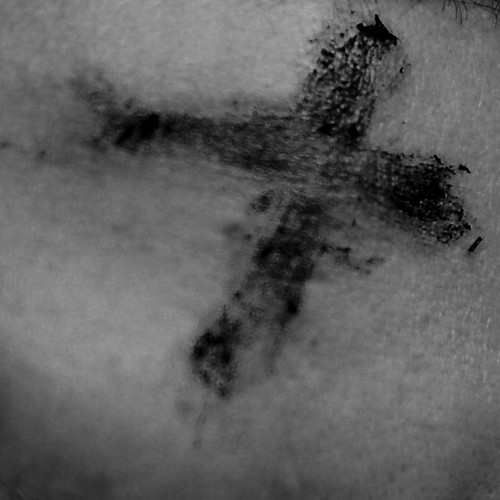


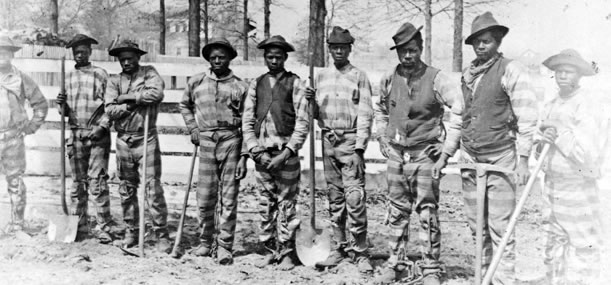
[KQED in San Francisco will broadcast at 10pm PT, and WTTW in Chicago at 9pm CT; below is a list of some larger media markets where the times are different.].
This film vividly presents the little-known story of thewidescale reimposition of actual slavery in the South, after Reconstruction, which reached its height in the early 20th Century and continued -- with its condoning by the US Dept. of Justice -- until Pearl Harbor. |The consequences for African-American families and communities in the South were horrific.This severe abuse represented a form of judicial, political and economic terrorism which still reverberates in American politics.The film concentrates on a few stories of the hundreds of thousands of African-American men dragged into the “convict-leasing system” – and assigned to coal mines, brick factories, farming and other industrial-sized enterprises, with murderous consequences for them and incredible profits for the corporations which used them. In coal mining, the slave labor system was explicitly used to stop one of the most important strikes in Southern history – the UMWA’s effort to stop convict leasing at the US Steel mines in Birmingham. That strike was smashed by the Alabama state militia in an incident every bit as brutal as the well-known incident in Ludlow, CO.
Most of this report was researched and written by Weiping Li, Mera Szendro Bok, and edited by Sarah Myers.
Netizens around the world took collective action with a mass Internet blackout on January 18 to protest the United States' Stop Online Piracy Act (SOPA) and the Protect IP Act, which, in its effort to enforce copyright online, would have compelled Internet service providers and platforms to monitor and censor their users or risk being blocked or penalized in the United States, and would have weakened the Internet's domain name system, among other things. Global Voices and Global Voices Advocacy participated in the protest along with over 7,000 websites, including Mozilla, Wikipedia, Reddit, Flickr, TwitPic, Boing Boing. Advocacy groups including Public Knowledge and Free Press blacked out their sites and posted information about how to get involved in the fight against these bills.
Many protest websites tracked the bill's Congressional Representatives' supporters, ultimately pressuring many representatives to withdraw their support. In the end, Congressman Lamar Smith, SOPA's sponsor, pulled the bill and said it would not go to a vote until “issues are addressed”. Inspired by the American protests, netizens took action around the world on digital rights, including Chinese activists. An article in Ars Technica neatly summed up the impact of the legislation on the rest of the world.
After SOPA and PIPA’s Death
Now it seems that SOPA and PIPA are dead. But concerns about illegal file-sharing persist, and commentators warn that similar bills may be reincarnated. Ben Huh, The CEO of I Can Has Cheezburger?, states that we still have more work to do in order to defend Internet freedom and sustain the engine of netizen mobilization. His opinions echo an article by Alex Howard on O’Reilly Radar, which argues that citizens need to band together to work out alternatives to SOPA. Internet and Politics guru Micah Sifry discusses the broader political environment that produced the bills, and the need for Internet companies and netizens to work for political reform. Internet law Professor Yochai Benkler offers seven lessons and four proposals on where we go from here.
Censorship
Major Chinese cities including Beijing, Shanghai, Tianjin, Guangzhou, and Shenzhen have enforced a registration system that requires users to register their real name on Weibo, the prominent Chinese microblog. Although the new regulation has been widely criticized by Chinese netizens, including Pony Ma (Ma Hauteng), the founder of Chinese Internet service company Tencent, the Chinese authority still plans to implement the rule in other parts of the country.
In contrast, South Korea, which adopted online real-name registration in 2007, has taken steps to abandon the practice. Having faced criticisms of infringing freedom of expression and concerns over hacking, some Internet companies have decided to stop asking customers’ resident numbers, and the Korea Communications Commission is also planning to abandon the real-name registration requirement.
Surveillance
The Argentinean government is launching a program to build a national biometric service named “the Federal System of Biometric Identification (SIBIOS)“. This system combines Argentinean citizens’ biometric information with other databases and be used by law enforcement. According to Katitza Rodriguez’s report for Global Voices Advocacy, the information gathered through the SIBIOS system would include not only biometric identifiers but also “an individual's digital image, civil status, blood type, and key background information”. The program has raised serious concerns over the government’s unrestrained power to surveil its people.
Sprint has promised to remove CarrierIQ tracking software from the cell phones using its network, making good on its word to improve security for its users.
To fight against the government’s intrusion into netizens’ personal Internet information, EFF and ACLU filed an appeal to challenge the U.S. district court’s decision to refuse disclosure of all orders in the Twitter/Wikileaks case.
A hacked document revealing that RIM, Nokia, and Apple provided the Indian government backdoor access to users’ communications may be fake. The three companies and security company Symantec have argued this document was full of incorrect information, and is not from the Indian directorate general of military intelligence.
Netizen activism
A recent study found that in Colombia, the Internet is changing the media landscape. The research pointed out that online journalism emphasizes local perspectives and incorporates more interaction with readers.
According to the Statistical Report on Internet Development published by the China Internet Network Information Center (CNNIC), the number of Chinese Internet users hit 513 million in 2011, which is almost equivalent to the number of Twitter users. Half of the the 513 million netizens are microblog users.
Is citizen journalism rising in China? Maybe. With the prevalence of digital cameras, videos, and social media, more and more Chinese citizens shoot newsworthy events and are uploading the clips to websites. Media scholars expect this trend may promote societal progress.
Want to know more about hacktivists who often hit the Internet activism headlines? This documentary may provide the audience with insight into hacktivist group Anomymous.
Sovereigns of Cyberspace
Twitter has announced that it now has the capability to restrict content from appearing in certain countries. The company says this will allow it to comply with local laws in different countries without having to remove content globally. When content is restricted in this way, the action will be reported to users through the Chilling Effects website.
Twitter also acquired a start-up company which has developed a service to summarize social media content and solve the information-overload problem.
Google announcement of an “upgrade” of its privacy policy and terms of service that integrates user information across its search engine, GMail, YouTube and its 57 other services stirred criticism from privacy groups and some members of Congress. In the weeks before the announcement, Google launched a “Good to Know” campaign to educate the public on how to stay safe online. Meanwhile, Google is also readjusting its China business strategy. Setting its past confrontations with the Chinese government over censorship aside, Google has decided not to miss out on this big market and plans to introduce more services.
And much more: read the complete report at Netizen Report: Uprising EditionPeter Constantine in the New York Times Book Review writes
Among the most surprising qualities of “Babel No More,” Michael Erard’s globe-trekking adventure in search of the world’s virtuosos of language learning, is that a book dealing with language acquisition and polyglot linguistics can be so gripping. But indeed it is — part travelogue, part science lesson, part intellectual investigation, it is an entertaining, informative survey of some of the most fascinating polyglots of our time.
How is it, Erard asks, that certain people are able to accumulate what for the average person is a daunting number of languages? What are the secrets of polyglots who can master 6, 26, 96 languages? What are their quirks and attitudes? Are their brains wired differently from ours?
Erard, a journalist who writes frequently on language and whose previous book was “Um . . . : Slips, Stumbles, and Verbal Blunders, and What They Mean,” begins by visiting Bologna, Italy, the hometown of one of history’s most distinguished polyglots, the 19th-century cardinal Giuseppe Mezzofanti. The cardinal is said to have known 45, 50, 58 or even more languages, depending on whom you ask. Victorian travelers who met him at ecclesiastical banquets reported that he affably conversed in all directions with foreign visitors in languages ranging from French, German and Arabic to Algonquin and “Californian.” (Lord Byron, who challenged the cardinal to a multilingual contest of profanities, was not only summarily defeated but walked away from the contest having learned a number of new Cockney gibes.)
The Art of Mastering Many Tongues, 3 Quarks Daily. More here.



